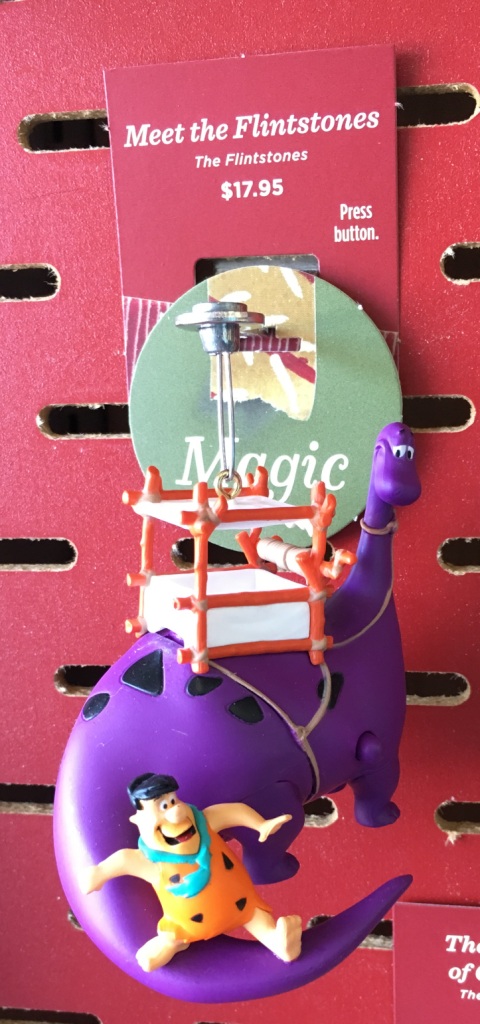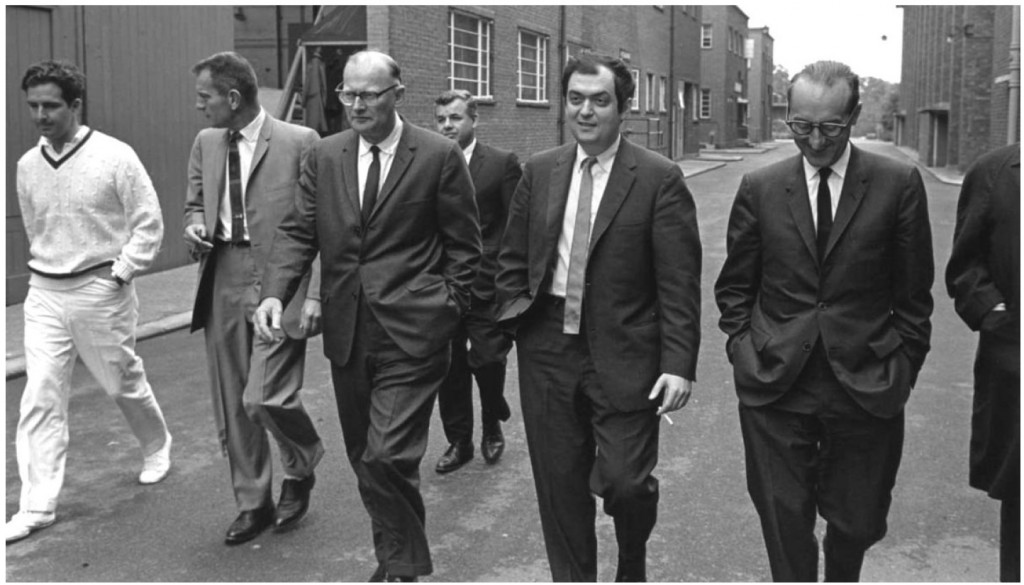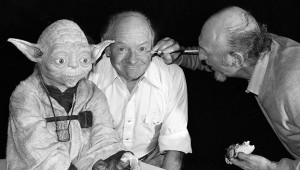(1) JIM HENLEY POOPS ON SPACE. In comments, Jim deposited this link to a report that long-duration space habitation impairs vision in 80% of astronauts. (Hey, “poops” is his word.)
In 2005, astronaut John Phillips took a break from his work on the International Space Station and looked out the window at Earth. He was about halfway through a mission that had begun in April and would end in October.
When he gazed down at the planet, the Earth was blurry. He couldn’t focus on it clearly. That was strange — his vision had always been 20/20. He wondered: Was his eyesight getting worse?
“I’m not sure if I reported that to the ground,” he said. “I think I didn’t. I thought it would be something that would just go away, and fix itself when I got to Earth.”
It didn’t go away.
During Phillips’ post-flight physical, NASA found that his vision had gone from 20/20 to 20/100 in six months.
Rigorous testing followed. Phillips got MRIs, retinal scans, neurological tests and a spinal tap. The tests showed that not only had his vision changed, but his eyes had changed as well.
The backs of his eyes had gotten flatter, pushing his retinas forward. He had choroidal folds, which are like stretch marks. His optic nerves were inflamed.
Phillips case became the first widely recognized one of a mysterious syndrome that affects 80 percent of astronauts on long-duration missions in space. The syndrome could interfere with plans for future crewed space missions, including any trips to Mars.
(2) THE TAKING-UP-SPACE PROGRAM. You might say The Traveler at Galactic Journey doesn’t see eye-to-eye with editor John W. Campbell, who spent 20 pages criticizing the space program in Analog: “[July 10, 1961] The Last Straw (Campbell’s Wrong-Headed Rant In The August 1961 Analog]“
Campbell’s argument is as follows:
1) America could have had a man in space in 1951, but America is a democracy, and its populace (hence, the government) is too stupid to understand the value of space travel.
2) The government’s efforts to put a man in space are all failures: Project Vanguard didn’t work. Project Mercury won’t go to orbit. Liquid-fueled rockets are pointless.
3) Ford motor company produced Project Farside, a series of solid-fueled “rock-oons,” on the cheap, so therefore, the best way to get into space…nay…the only way is to give the reins to private industry.
Campbell isn’t just wrong on every single one of these assertions. He’s delusional.
(3) WHO DAT? The Mirror stirs up rumors in its news article “Can Matt Smith be the first Doctor Who to regenerate as himself?”
Matt Smith may be about to travel back in time to play Doctor Who again.
Show boss Steven Moffat has hinted Smith could be the first of the 12 Doctors to return to the Tardis after regenerating.
Matt, who stars as Prince Phillip in Netflix’s big-budget royal drama The Crown in November, has made no secret of his desire to return, saying last year: “They will ask me back one day, won’t they?”
Matt’s successor Peter Capaldi has been tipped to bow out after the next series, currently being filmed for release in 2017.
And Moffat, who is leaving after his sixth season next year has said Matt is “quite open about how much he misses it, and how much he wishes he hadn’t left”.
(4) OH SAY DID YOU HEAR? A piece by Carly Carioli in the July 1 Boston Globe called “Did the Star-Spangled Banner land Igor Stravinsky in Jail?” explores the issue of whether or not Stravinsky was arrested for playing a radical arrangement of the national anthem in 1944. (He wasn’t because he substituted the traditional arrangement at the last minute.)
The sf connection is that Carioli linked to a photo of Stravinsky. “The novelist Neil Gaiman thought it was a mug shot. He sent the image to the blog Boing-Boing a few years ago, along with an astounding plot-point: He claimed that Stravinsky had been arrested in Boston” for his weird arrangement.
Spoiler alert: The photo is not a mug shot, and Stravinsky was never arrested. But the real story of what happened to the composer in Boston is an incredible tale. He did compose a weird arrangement of the national anthem, and the Boston police really did ban him from performing it — sparking a national uproar and a tense showdown that played out live on the radio.
The Boston Globe has a tight paywall of five articles a month, so good luck clicking through.
(5) TODAY’S BIRTHDAY BOYS
- Born July 10, 1923 – Earl Hamner, Jr.
- Born July 10, 1926 – Fred Gwynne
- Born July 10, 1929 – George Clayton Johnson
- Born July 10, 1941 — David G. Hartwell
(6) HUGO NOVELETTES REVIEWED. Rich Horton explains how he is ranking the Hugo-nominated Novelettes on Strange at Ecbatan.
As I wrote in my first post in this series: I am not planning to reflexively rank Rabid Puppy entries below No Award. I am of course disgusted by the Rabid Puppy antics, and I feel that many worthier stories were kept off the ballot by the Rabid choices. And if a story is bad enough, it will certainly be off my ballot, with No Award the last choice. (That’s always been my approach.) But, this year in particular, many of the nominees supported by the Rabid Puppies were either unaware of that, or aware and quite clearly not happy with that. Also, I don’t want to reduce the meaningfulness of the win for those worthy winners – if they finish first and No Award is second, to my mind it to some extent delegitimizes their wins, through no fault of their own. Better to have been chosen the best with every voting on merit than voted best simply because all the other choices were automatically rejected regardless of quality.
(7) STEPHEN KING. Lisa J. Goldstein reviews Stephen King’s Hugo-nominated novelette: “Obits” at inferior4+1.
Sometimes I think that Stephen King is too skilled a writer for his own good. No, wait, hear me out. “Obits” is about an obituary writer who discovers that when he writes obituaries about live people, they end up dead. It’s not an earth-shattering idea, and I’d bet that any number of writers have come up with something similar. Other writers, though, would try to figure out where the story should go, how it should end, if it would be too predictable — and when they finished with all of that, they’d decide that the idea wouldn’t work, that it’s just not a very good concept for a story.
(8) CHIMERA CREATURES. Mary Lowd has been rescuing stuffed animals and playing mad scientist in order to resurrect them. She displays the results in a photo gallery.
The Subjects:
For this project, subjects were gathered from local dispensaries of unwanted toys. Most of the specimens were procured from various Goodwills, but a few were found at St. Vinnie’s and Sarah’s Treasures. Excluding a few exceptional specimens, they all cost between $1 and $2. Even the exceptional ones cost at most $4. In order for a specimen to be suitable, it had to be in good condition, contain nice parts, but be — shall we say — uninspiring in its totallity. Several specimens were rejected for inclusion due to being too lovable in their original, unaltered forms. All of the specimens selected for final inclusion in the project are pictured below in Fig. 1 – 3.
(9) WHEN LUCY LAUNCHED A THOUSAND STARSHIPS. Many writers have been fascinated to discover Lucille Ball played a role in getting Star Trek on the air. The latest retelling of the tale is “How Lucille Ball Saved Star Trek“ at Entertainment Weekly.
While many series were being shot at Desilu, the studio was in dire need of original programming of its own following the end of The Untouchables in 1963. Herbert Solow, hired to help locate new projects for the studio, brought two notable proposals to Desilu in 1964. One was Mission: Impossible; the other was Roddenberry’s quirky sci-fi idea. When Lucy’s longtime network CBS said no to Trek, Solow and Roddenberry took it to NBC. Science fiction was alien to the network’s schedule, but it ordered a pilot.
According to Solow in Marc Cushman’s history These Are the Voyages, Lucy initially thought Star Trek was about traveling USO performers. But her support for the show was necessary as it became clear how expensive the pilot would be. Lucy overruled her board of directors to make sure the episode was produced.
(10) STAND BY ME (BUT NOT TOO CLOSE). There is a flurry of weird news stories about Pokémon Go players getting hurt or whatnot. Here is the first of several people have sent me today: “Players in hunt for Pokemon Go monsters feel real-world pain” reports ABC’s Chicago affiliate.
Beware: “Pokemon Go,” a new smartphone game based on cute Nintendo characters like Squirtle and Pikachu, can be harmful to your health. The “augmented reality” game, which layers gameplay onto the physical world, became the top grossing app in the iPhone app store just days after its Wednesday release in the U.S., Australia and New Zealand. And players have already reported wiping out in a variety of ways as they wander the real world – eyes glued to their smartphone screens – in search of digital monsters.
Mike Schultz, a 21-year-old communications graduate on Long Island, New York, took a spill on his skateboard as he stared at his phone while cruising for critters early Thursday. He cut his hand on the sidewalk after hitting a big crack, and blames himself for going too slowly. “I just wanted to be able to stop quickly if there were any Pokemons nearby to catch,” he says. “I don’t think the company is really at fault.”
(11) ACHIEVEMENT UNBURIED. One player got more than she bargained for: “Pokémon Go player finds dead body in Wyoming river while searching for a Pokestop”.
The augmented reality game, which was released last week, gets people to catch virtual monsters using the person’s location on their phone.
Nineteen-year-old Shayla Wiggins, from Wyoming, was told to find a Pokemon in a natural water source but instead found a man’s corpse.
“I was walking towards the bridge along the shore when I saw something in the water,” she told County 10 news.
“I had to take a second look and I realised it was a body.”
(12) DARWIN REWARD. Police in Darwin, Australia requested on their Facebook page that players not waltz into their station, which of course is a Pokestop in the game.
For those budding Pokemon Trainers out there using Pokemon Go – whilst the Darwin Police Station may feature as a Pokestop, please be advised that you don’t actually have to step inside in order to gain the pokeballs.
It’s also a good idea to look up, away from your phone and both ways before crossing the street. That Sandshrew isn’t going anywhere fast.
Stay safe and catch ’em all!
(13) ROBBERMON. And then there are the robbers who figured out that setting up a beacon in the game was a surefire way to attract victims.
Police in O’Fallon, Missouri are investigating a series of armed robberies believe that the robbers used the Pokemon Go smartphone app to target victims, according to a post on the department’s Facebook page. Four suspects were arrested early Sunday morning near the intersection of Highway K and Feise Road in O’Fallon after a report of an armed robbery. Police say they are suspected of multiple armed robberies in St. Louis and St. Charles counties in Missouri. A handgun was recovered.
Police believe they used the game to, “add a beacon to a pokestop to lure more players” and then used the app to locate victims.
(14) RISK ASSESSMENT. Fitting in with the week’s tragic news is this take on playing the game: “Warning: Pokemon GO is a Death Sentence if you are a Black Man”.
I spent less than 20 minutes outside. Five of those minutes were spent enjoying the game. One of those minutes I spent trying to look as pleasant and nonthreatening as possible as I walked past a somewhat visibly disturbed white woman on her way to the bus stop. I spent the other 14 minutes being distracted from the game by thoughts of the countless Black Men who have had the police called on them because they looked “suspicious” or wondering what a second amendment exercising individual might do if I walked past their window a 3rd or 4th time in search of a Jigglypuff.
When my brain started combining the complexity of being Black in America with the real world proposal of wandering and exploration that is designed into the gameplay of Pokemon GO, there was only one conclusion. I might die if I keep playing.
(15) TOY QUEST. John King Tarpinian went to a store and personally checked out several of the Hallmark collectible ornaments discussed in a post here at File 770. He says the fidelity of the recordings is “surprisingly good.”
Though about this one he cryptically commented, “No sound but yabba dabba doo.”
(16) MORE TOYS. ScreenRant previews Star Wars toys and figure fans can see at Comic-Con.
Folks heading to San Diego Comic-Con can also get their Star Wars fix from July 21 – 24. If you plan on attending SDCC later this month, make sure to swing by the Hasbro booth (#3213) and have your fill of some new Star Wars figures. Hasbro will also have a panel on Friday, July 22nd at noon to introduce their latest line of exclusives….
As noted above, the Darth Vader, Kanan Jarrus, and Biker Scout figures are 12? models while Rey and Hera Syndulla are just under 4? tall. Kanan and Vader also have “electronic touches” which could mean their light sabers actually glow. These figures will be on display at SDCC, but fans will have to exercise some patience because they won’t be available for purchase until fall 2016 — just in time for Christmas
(17) STAR WARS CON IN LONDON. The same ScreenRant post also links to the 3-day Star Wars Celebration Europe 2016 that takes place in London from July 15 – 17. This event will see several exclusives including the premiere of the third season of Star Wars Rebels and a huge presence from Star Wars video games.
For those of us who can’t make it across the pond, some panels will be streamed, including the Rogue One panel, where we should be in for a new trailer for the spinoff film.
(18) REMEMBERING GEORGE. There will be a George Clayton Johnson Memorial Gathering at Comic-Con International in San Diego on Thursday, July 21 at 9:00 p.m.
Let’s share our memories and adventures of our pal and mentor for over 40 years. George wrote “The Man Trap” the very first Star Trek episode that aired. He also wrote 8 original Twilight Zone episodes, Oceans 11 movie and the “Logan’s Run” novel with William F. Nolan. Panel participants include David Gerrold, Craig Miller, Greg Koudoulian, Gene Henderson, Clayton Moore, Scott Smith, Jimmy Diggs and Anthony Keith
(I don’t know which Clayton Moore this is but it can’t be the one from The Lone Ranger – he passed away in 1999.)
(19) KUBRICK LOST AND FOUND. A 2015 documentary on YouTube, Stanley Kubrick: The Lost Tapes, is based on tapes that a New Yorker writer produced in 1966 for a Kubrick profile. Kubrick discusses the making of Dr. Strangelove at about 20 minutes in to this 25-minute documentary. He discusses his professional relationship with Arthur C. Clarke very briefly beginning at 22:00.
(20) ROD SERLING AND GROUCHO MARX. You Bet Your Life was retooled as Tell It To Groucho and sold to CBS for one short season in early 1962. Here’s half of one of the very few episodes available to view today, featuring Rod Serling.
(21) MORE HARLEY QUINN. The Suicide Squad international trailer dropped.
https://www.youtube.com/watch?v=Fep4KiwyQuk
[Thanks to Martin Morse Wooster, Petréa Mitchell, Dawn Incognito, Hampus Eckerman, Cat Rambo, Jim Henley, and John King Tarpinian for some of these stories. Title credit goes to File 770 contributing editor of the day ULTRAGOTHA.]





